CARTHE 2012 Benthic Sampling Cruise
Consortium for Advanced Research on Transport of Hydrocarbon in the Environment
-to accurately predict the fate of hydrocarbons released into the environment
Funded by: Gulf of Mexico Research Initiative


As part of CARTHE, our group will lead observation cruises to expand work on oil deposits to oil present in shelf and abyssal ocean environments. The first cruise will be aboard the R/V Pelican on June 30 to July 2, 2012. The objective of this cruise will be to sample sediments at the sediment-water interface using a multi-corer and to measure bulk stable isotopes, radiocarbon content, radiocarbon age spectrum, and isotopic composition of specific compounds in sediment organic material. Additionally, water column samples will be measured for radiocarbon content. To accomplish these goals, the scientific crew will need dependable sediment chronology and understanding of the benthic communities and their relationship to the chemistry of the sediments. Below, you can read about the roles of the scientific crew.
Scientific Crew
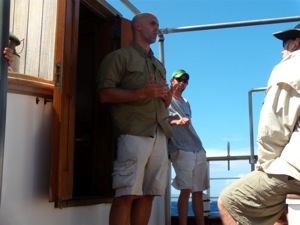
Brad E. Rosenheim - Chief Scientist
Dr. Rosenheim is interested in comparing bulk isotope and compound specific isotope ratios of the collected sediments to his ramped pyrolysis technique to test for traces of oil, and obtaining water column carbon chemical data. Work will focus on the core-tops, sampled with a multicorer for ultimate preservation of the sediment water interface. Sediment esults will be compared to the relatively abundant sea floor sediment data available from the Gulf of Mexico. On the other hand, water column carbon chemistry will allow more understanding of the Gulf of Mexico than the dearth of information available before the DWH spill, especially if other groups join this effort.
Alexander S. Kolker, LUMCON - co-PI
Dr. Kolker is a sedimentologist specializing in marsh sediment accretion. He and his group will be responsible for measuring sediment chronology using radioisotopes and for X-raying the sediment cores in order to provide evidence of stratigraphy. Chronology will be important to put the sediment record into context with the DWH spill timeline, and evidence of stratification of the sediment will relate geochemical work to infaunal mixing and potential disturbances of this ubiquitous sedimentary process.
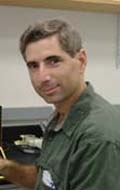
Dr. Carney is interested in benthic fauna and will be characterizing color of sediments as a proxy for reductive or oxidative conditions within the sediment. He brings a wealth of knowledge concerning Gulf of Mexico seep communities and infaunal communities in general. Relationships between sediment hue and X-radiographs will allow an important characterization of the sediment in terms of infaunal mixing, an important variable in geochemical studies of sediment
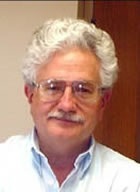
Matthew Pendergraft, MS student, Tulane
Matthew is working with Dr. Rosenheim on applications of ramped pyrolysis to oil-containing sediments. While most of his work is based on land-deposited oil (Grand Isle and Barataria Bay), Matthew has been heavily involved in preparing for this cruise. The work done on sediments taken during the CARTHE observations cruise will serve as a link between Matthew’s work on land-deposited oil and marine degradation of oil.
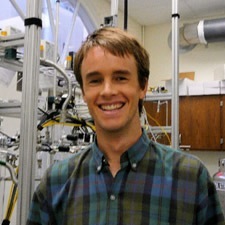
Cyndhia Ramatchandirane, MS student, Tulane
Cyndhia is studying sedimentation processes of the SW Louisiana Chenier Plane. She is interested in sedimentation processes in general and hopes to learn about transport of terrigenous sediment off-shelf during this cruise. Cyndhia will be involved in the X-raying of sediments and core description.




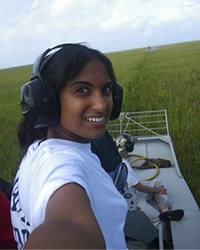

Valerie Cruz, MS student, Southern Miss
Valerie is working on benthic commnuties in the Gulf of Mexico under Dr. Charlotte Brunner of the University of Southern Mississippi. During this cruise, Valerie will take several cores from two multicore casts near the DWH site and use them for a replication study. Additionally she will stain some cores to tag foraminifera living at the time of collection for counting back at the laboratory.
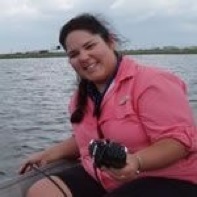
Elizabeth Williams, Ph.D. student, Tulane
Elizabeth is working on chemical characterization of the novel ramped pyrolysis radiocarbon technique and application to wetland sediments. This will be Elizabeth’s first ocean-going voyage and she is eager to help with coring and sampling of cores with the hopes that some of the cores will be helpful in her diagenetic studies.

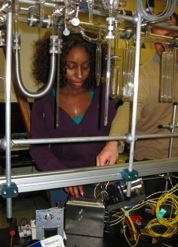
Alex Ameen, MS Student, Tulane
Alex is a new graduate student of Caz Taylor at Tulane, after having been a technician in Alex Kolker’s group. Although he has taken his talents to biology, he comes with a wealth of knowledge about coring and sediment description.




